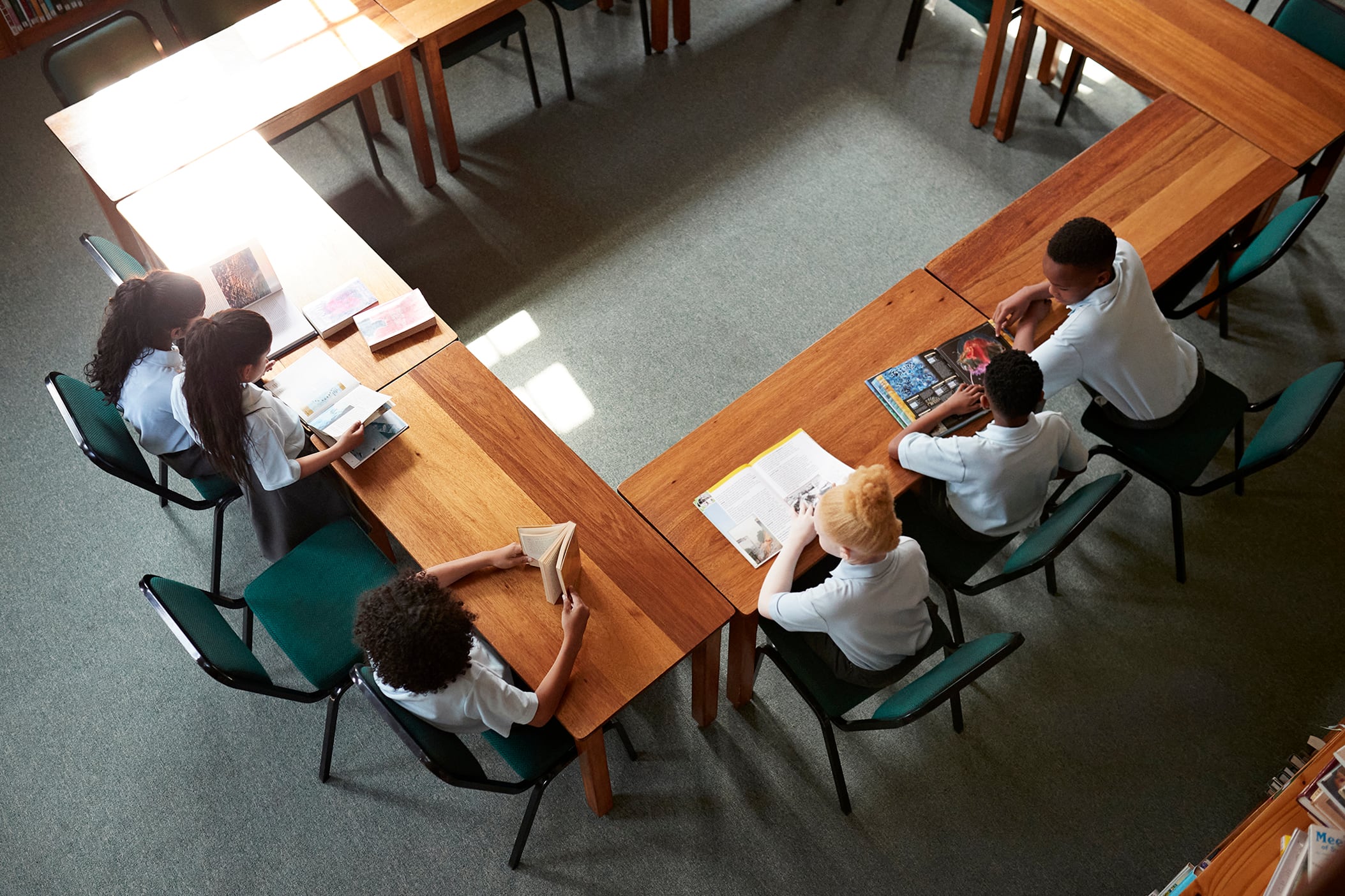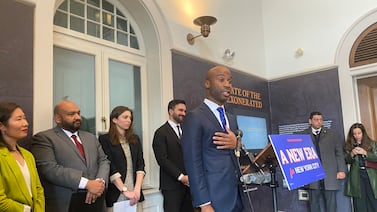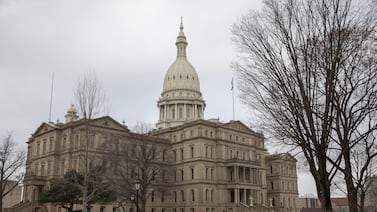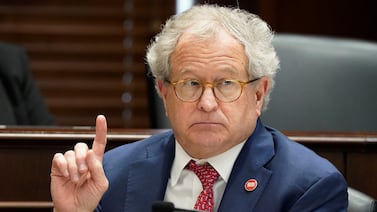Sign up for Chalkbeat Indiana’s free daily newsletter to keep up with Indianapolis Public Schools, Marion County’s township districts, and statewide education news.
A new federal tax credit touted as the country’s first national school choice program could help families pay for Indiana’s rising private school tuition costs but also favor wealthier urban areas over rural communities.
The program established by the tax and domestic policy bill signed by President Donald Trump earlier this month likely won’t generate as much money as school choice advocates initially hoped after members of Congress made compromises to get it over the finish line. Still, advocates say it might start small but will grow rapidly.
The new program creates a dollar-for-dollar federal tax credit for individuals who donate to scholarship-granting organizations, or SGO, a type of nonprofit that provides funding for families to send their children to private schools. These nonprofits are associated with multiple schools.
Indiana lawmakers would first have to opt the state into the program in order for families to benefit from it. If state lawmakers do so, the additional scholarship funding could help cover rising private school tuition costs that aren’t always paid for by the state’s voucher program or the current scholarships backed by SGOs and funded by a state tax credit.
But as with other school choice programs, the new federal funds would only benefit students who can in practice attend participating schools.
The gap between the voucher amount students receive and the total cost of tuition at private schools can be significant, said Scott Schumacher, executive director of The Lutheran SGO of Indiana.
A report this year from Indiana’s voucher program estimated families were still responsible for an average of $2,450 in tuition costs after receiving a voucher.
“If Indiana chooses to opt-in, this could provide another great way to reduce the gap between school choice vouchers and the full cost to educate a child attending a participating non-public school,” Schumacher said.
Because eligibility for the federal program’s is tied to local median income, that could mean higher-income families in urban areas qualify for the scholarships funded by the new federal tax credits, while middle-income families in rural areas don’t, said Jon Valant, director of the Brown Center on Education Policy at the Brookings Institution.
Coupled with the fact that rural areas tend to have fewer private schools to begin with, the new federal tax credits are less likely to help rural families, Valant said.
Under the federal program, nonprofit organizations can begin accepting donations and distributing scholarships in December 2026.
Federal tax credits could grow fast in Indiana
It’s likely that conservative-led states like Indiana will opt in to the new program, said Valant, because “it’s additional money they can put into school choice.” But the decision will likely be more complicated in blue and purple states, where public opinion on choice programs is mixed and Democratic officials might be hostile to them.
However, donors in states that don’t opt in could still donate to SGOs in participating states and receive the tax credits.
Unlike in earlier proposals of the federal tax credits, in the final version, only cash donations are eligible for the federal credit for a maximum amount of $1,700 per individual, rather than cash or stock donations. And critically, corporations are excluded from the credit entirely.
Those changes will likely slow the growth of the program, although there is no total cap on the federal tax credits.
Indiana already offers its own state tax credit for donations to SGOs in which donors get a 50-cent tax credit for every dollar they donate. There are no limits on individual or corporate contributions, but the total amount available for the tax credit is $18.5 million per fiscal year.
Donations came in under that cap the last two fiscal years. It approved around $17 million in tax credits in fiscal year 2025, and $15.5 million fiscal year 2024.
The state has eight active SGOs that distributed around $23 million in scholarships in the 2023-24 school year, the most recent data available.
These private scholarships are separate from — and can be used by families in addition to — Indiana’s Choice Scholarship Program, the state’s signature voucher program. That program provided $497 million in state funds in 2024-25 for students to attend private schools.
Indiana lawmakers this year removed the final income cap on the Choice Scholarship Program to make all families eligible, regardless of how much they make, beginning in 2026.
It was not possible to enact a national equivalent of this kind of voucher program because the federal government doesn’t fund parents and schools directly, said Jeanne Allen, founder and CEO of the Center for Education Reform, which supports private school choice.
Instead, the federal tax credit signed into law by Trump was the “least intrusive, most direct way for taxpayers to participate in educational choice,” Allen said.
It also has lots of potential for future expansion, she said.
“It’s a relatively small amount of money, it’ll take time to raise it, but once people are aware of it, it’ll accelerate,” Allen said.
Funding could fill gaps but leave students out
Even as more Indiana families gain access to vouchers, there are indications that they cover less as private schools raise tuition, according to the 2024-25 Choice Scholarship report.
Indiana students can receive a voucher amount equivalent to either the school’s tuition, or 90% of the amount given to a student’s home school district, whichever is less. In 2024-25, only around 28% of students received the full cost of their tuition and fees — a much smaller share than in past years, when around 43% of families received an amount that could cover their full tuition costs.
Meanwhile, Indiana’s SGOs and the new federal program have different eligibility requirements. The state SGOs are open to families making 400% or less of the federal income threshold for families to get free or reduced-price lunch. The new federal tax credits are open to families making no more than 300% of the local median income.
This will mean that SGOs need to keep the state and federal donations and scholarships separate, Schumacher said.
The reliance on local median income for the tax-credit eligibility could also favor many urban families over rural ones, according to Valant, because urban areas tend to be higher-income communities.
Few regulations on SGO’s also could open the door to discrimination against certain students, such LGBTQ children or those with disabilities, Valant said.
In Indiana, students must meet income, residency, and age requirements to receive an SGO scholarship, but the organizations can set their own additional requirements for their scholarships as well. For example, every student who gets a scholarship from the Lutheran SGO receives $500, but scholarships are distributed based on financial need, and families can apply for additional support.
Donors can designate their contribution for a specific school, but not for a specific student.
Receiving a school voucher is not a condition of receiving a scholarship from an SGO. The Indiana Choice Scholarship program has its own eligibility requirements.
Aleksandra Appleton covers Indiana education policy and writes about K-12 schools across the state. Contact her at aappleton@chalkbeat.org.






